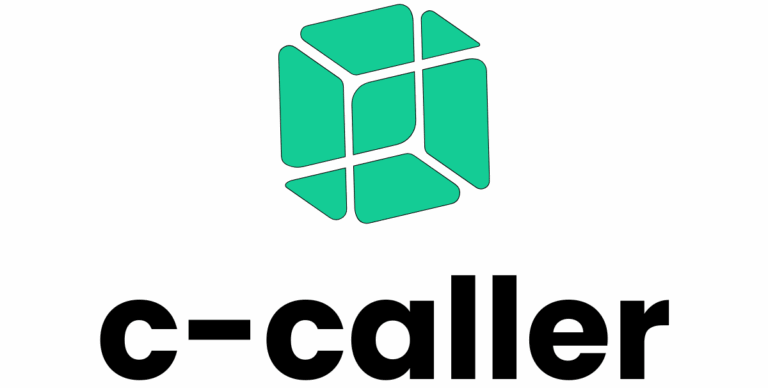In today’s fast-paced business world, staying ahead of the curve isn’t just a goal—it’s a necessity. Enter SaaS enterprise applications, the superheroes of the digital age. These cloud-based solutions swoop in to save the day, transforming how companies operate, collaborate, and scale. Who needs a cape when you’ve got seamless integration and real-time data at your fingertips?
Imagine trading in cumbersome software for sleek, user-friendly platforms that make work feel less like a chore and more like a breeze. With SaaS, businesses can say goodbye to hefty upfront costs and hello to flexibility and scalability. It’s like having a personal assistant who never takes a coffee break! As organizations increasingly embrace these innovative tools, understanding their benefits becomes crucial. Buckle up as we dive into the world of SaaS enterprise applications and explore how they can revolutionize the way businesses function.
Table of Contents
ToggleOverview of SaaS Enterprise Applications
SaaS enterprise applications represent a shift towards cloud-based software solutions that streamline business operations and enhance scalability. These applications improve collaboration among teams and reduce reliance on traditional IT infrastructure.
What Are SaaS Enterprise Applications?
SaaS enterprise applications deliver software over the internet, allowing organizations to access tools easily without extensive installations. They operate on a subscription basis, making it simpler for businesses to adapt to changing needs. Companies benefit from regular updates and maintenance handled by the service provider. Frequent deployment of new features keeps the applications relevant and efficient.
Key Features of SaaS Solutions
SaaS solutions come equipped with several critical features. They offer multi-tenancy, allowing multiple clients to use the same application while maintaining data privacy. Accessibility from any internet-enabled device enhances flexibility for users. Integration capabilities with other software streamline workflows and data sharing. Automated backup processes ensure data security and reliability. Customization options allow businesses to tailor functionalities to specific requirements.
Benefits of Using SaaS Enterprise Applications

SaaS enterprise applications offer significant advantages for businesses looking to improve efficiency and productivity. Two key benefits include cost efficiency and scalability, both essential for navigating today’s dynamic market.
Cost Efficiency
Organizations experience reduced expenses with SaaS solutions. By eliminating high upfront investments associated with traditional software, companies can allocate budgets more effectively. Subscriptions allow businesses to pay only for what they use, minimizing wasted resources. Predictable monthly fees also help with financial planning, making it easier to manage cash flow. Additionally, minimal maintenance costs arise from the cloud-based nature of these applications, freeing internal IT teams to focus on more strategic initiatives.
Scalability and Flexibility
SaaS applications scale effortlessly to meet fluctuating business needs. Companies can increase or decrease their subscription levels based on current demands, ensuring resources align with operations. This flexibility supports rapid growth or changes in the market. New features and updates roll out automatically, keeping businesses up-to-date without intervention. Furthermore, remote access allows teams to work from anywhere, adapting easily to work-from-home or hybrid models. This adaptability fosters enhanced collaboration, enabling teams to thrive regardless of location.
Popular SaaS Enterprise Applications
SaaS enterprise applications represent a crucial component in today’s business strategies. Organizations turn to various types of applications designed to meet specific needs.
Categories of SaaS Applications
Many categories exist within SaaS applications, reflecting diverse business requirements. Customer Relationship Management (CRM) applications help manage and analyze customer interactions. Enterprise Resource Planning (ERP) tools integrate core business processes, while Human Resources Management Systems (HRMS) streamline employee data management. Marketing automation platforms enhance promotional efforts, and Project Management applications support team collaboration. Each category provides tailored solutions for distinct aspects of business operations, allowing organizations to select applications that align with their objectives.
Leading Providers in the Industry
Several leading providers dominate the SaaS landscape, offering robust and reliable solutions. Salesforce stands out as a premier CRM platform, known for its extensive features. Microsoft Azure delivers a variety of cloud services, including hosting and data analytics. Workday excels in HR and financial management solutions. Google Workspace empowers collaboration through its productivity tools. Each provider brings unique strengths, enabling businesses to leverage their expertise to enhance operational efficiency and drive growth.
Challenges of Implementing SaaS Enterprise Applications
Implementing SaaS enterprise applications poses several challenges that organizations must navigate. Understanding these hurdles can lead to smoother transitions and better outcomes.
Security Concerns
Security concerns constitute a major challenge for businesses adopting SaaS solutions. Data breaches can occur if cloud services aren’t properly secured. Organizations face risks related to sensitive data exposure, compliance violations, and potential financial losses. Addressing these risks involves assessing the security measures of SaaS providers. Encryption, user authentication, and regular security audits play critical roles in safeguarding data. Companies must also enforce internal protocols for data access to prevent unauthorized entries. Regular training on security best practices can strengthen an organization’s defense against potential threats.
Integration with Existing Systems
Integration with existing systems presents another significant hurdle. Organizations frequently rely on legacy systems that may not seamlessly communicate with modern SaaS applications. Compatibility issues can emerge, disrupting workflows and reducing operational efficiency. Successful integration often requires extensive planning and technical resources, including API usage and middleware solutions. Ensuring that data flows smoothly between various platforms is crucial for maintaining productivity. Engaging IT teams early in the planning process ensures that integration strategies align with business objectives. Continual assessment of integration effectiveness supports responsive adjustments as needs evolve.
Future Trends in SaaS Enterprise Applications
SaaS enterprise applications continue to evolve, shaped by technological advancements and market dynamics. Organizations must stay informed about these trends to leverage their potential effectively.
Emerging Technologies
Artificial intelligence (AI) enhances SaaS applications, making them smarter and more responsive. Machine learning algorithms analyze user behavior, providing personalized experiences. Additionally, automation tools streamline repetitive tasks, allowing employees to focus on strategic initiatives. Blockchain technology fosters secure transactions and improves data integrity, appealing to industries with strict compliance requirements. Cloud-native architectures support scalability and resilience, ensuring applications can adapt to changing demands. As these technologies emerge, integrating them into SaaS solutions will optimize performance and drive innovation.
Market Growth Predictions
The SaaS market is projected to reach $623 billion by 2023, growing rapidly as businesses recognize its value. Companies are expected to increase their investments, with a focus on customer relationship management and enterprise resource planning platforms. Subscription-based models become increasingly attractive due to their flexibility and cost-effectiveness. Additionally, small and medium-sized enterprises are adopting SaaS solutions to enhance their competitiveness. The rise of remote work fuels demand for collaborative tools, solidifying SaaS applications as essential components of modern business infrastructure.
Conclusion
SaaS enterprise applications are redefining how businesses operate in today’s digital landscape. By offering flexibility and scalability, these cloud-based solutions empower organizations to streamline processes while minimizing costs. As companies increasingly adopt SaaS tools, they can focus on core activities rather than getting bogged down by traditional IT challenges.
With the integration of emerging technologies, the future of SaaS looks promising, paving the way for enhanced efficiency and collaboration. Organizations that embrace these innovations will not only stay competitive but also foster a more agile work environment. As the SaaS market continues to grow, it’s clear that these applications will remain vital in supporting business success.




